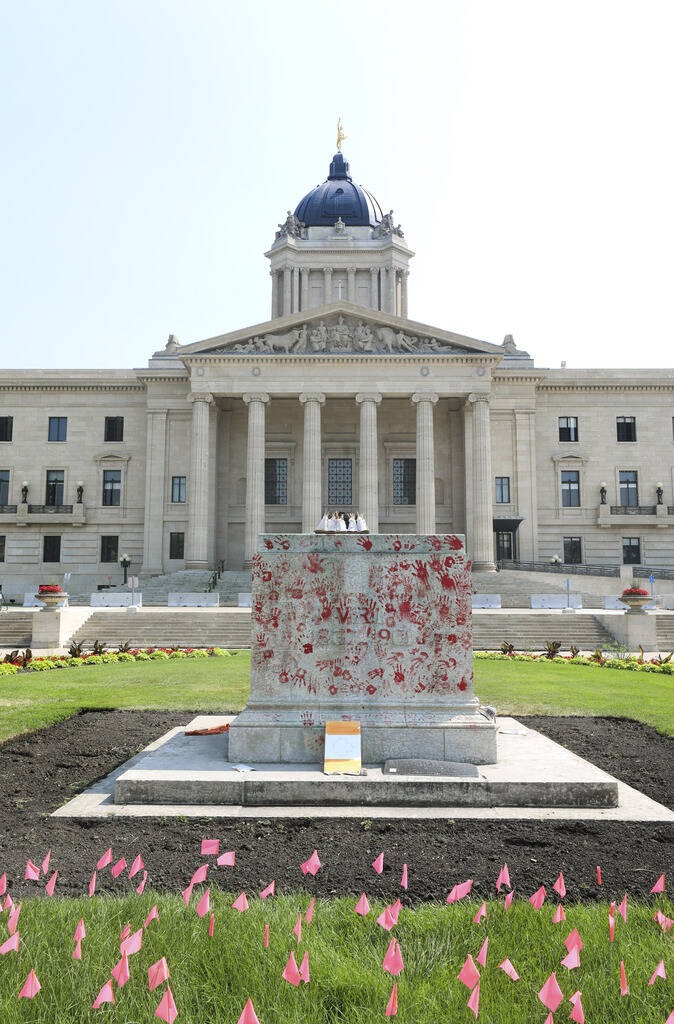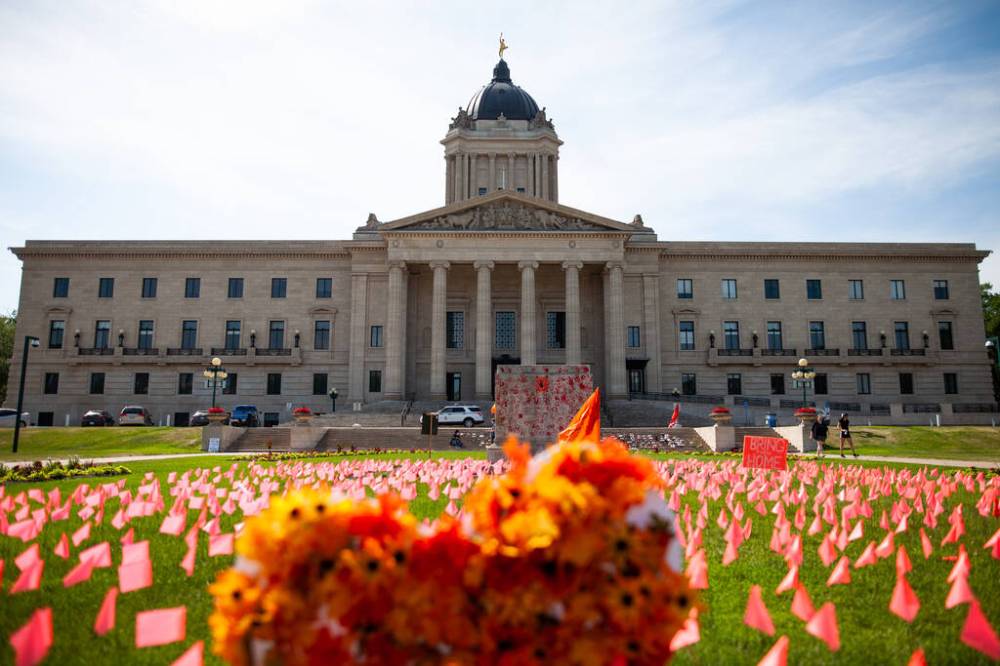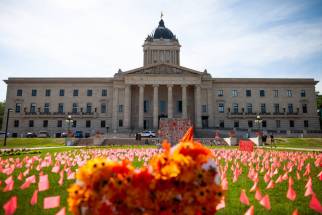Vacant plinth creates public art opportunity
Read this article for free:
or
Already have an account? Log in here »
To continue reading, please subscribe:
Monthly Digital Subscription
$19 $0 for the first 4 weeks*
- Enjoy unlimited reading on winnipegfreepress.com
- Read the E-Edition, our digital replica newspaper
- Access News Break, our award-winning app
- Play interactive puzzles
*No charge for four weeks then billed as $19 plus GST every four weeks. Offer only available to new and qualified returning subscribers. Cancel any time.
Read unlimited articles for free today:
or
Already have an account? Log in here »
Hey there, time traveller!
This article was published 13/07/2022 (896 days ago), so information in it may no longer be current.
For more than a year, the plinth that once supported a statue of Queen Victoria on the grounds of the Manitoba Legislature has sat vacant.
On Canada Day 2021, the statue was hauled to the ground by protesters in response to the discovery of what is presumed to be unmarked graves of Indigenous children at residential-school sites. The bronze figure was covered in red paint, and the head was removed and found later in the Assiniboine River.
It was a polarizing act, seen by some as an act of activism to be applauded, and by others as an act of vandalism to be chastised. Plenty of charged language was used, and the fate of the statue was the subject of heated debate for months.
Now, the question remains: what to do with the base?

In June, Justice Minister Kelvin Goertzen told The Canadian Press the toppled statue of Queen Victoria would not be repaired or replaced. While he cited cost — $500,000, at least — as a primary factor, what’s also clear is that simply replacing a rendering of a colonial figurehead would be a failure of imagination. The vacant plinth represents an opportunity.
One option is to leave it as it is: the empty base itself became a piece of public art in the truest sense, in that it was the public that reconfigured it. Indeed, a dethroned plinth, stained with indelible handprints in vivid hues of orange and red, cuts a striking image — one that communicates much more than a plaque with sanitized wording ever could.
Another option is to use the base as a platform for a changing display of public art, which urban planner Lawrence Bird, in an interview with the Free Press, suggested could bemodeled after the Fourth Plinth in London’s Trafalgar Square. The Fourth Plinth is among the highest-profile spaces for public art in the world, with new commissions installed every two years.
Indeed, a dethroned plinth, stained with indelible handprints in vivid hues of orange and red, cuts a striking image– one that communicates much more than a plaque with sanitized wording ever could.
A Legislative Plinth of this sort could offer a similar opportunity for visual artists here — in particular, Indigenous visual artists. It could be a chance to tell other stories about Treaty 1 territory and the homeland of the Métis, on which both the legislature — itself a colonial building — and the plinth reside.
Winnipeg has an embarrassment of riches when it comes to Indigenous public art and artists. So much of the public art that has made our cityscape more vibrant in the past few years — from Kenneth Lavallee’s star blanket murals and Goota Ashoona’s Sedna figure outside of the Winnipeg Art Gallery to Ian August’s giant Rooster Town kettle on the Southwest Transitway and the many sculptures throughout The Forks — has been created by Indigenous artists.
And those pieces do more than liven up austere spaces; they educate, provoke and inspire. They can tell us something about the histories — and futures — of the people who make up this city and province. A fixed statue of one British monarch only tells one version of one story; public art has the power to do much more.
Winnipeg has an embarrassment of riches when it comes to Indigenous public art and artists. So much of the public art that has made our cityscape more vibrant in the past few years.
Public art is not meant to be ensconced in a gallery or a museum or a private collection; it belongs to everyone. What an incredible opportunity, should the Manitoba government recognize and seize it, to do something meaningful, to build something relevant that belongs to us all.
As for the toppled statue, it could also exist as is, perhaps at the Manitoba Museum or the Canadian Museum for Human Rights, as a colonial monument turned symbol of protest, an artifact from the summer when the “truth” part of truth and reconciliation was confronted in a way that, quite literally, changed the landscape.









